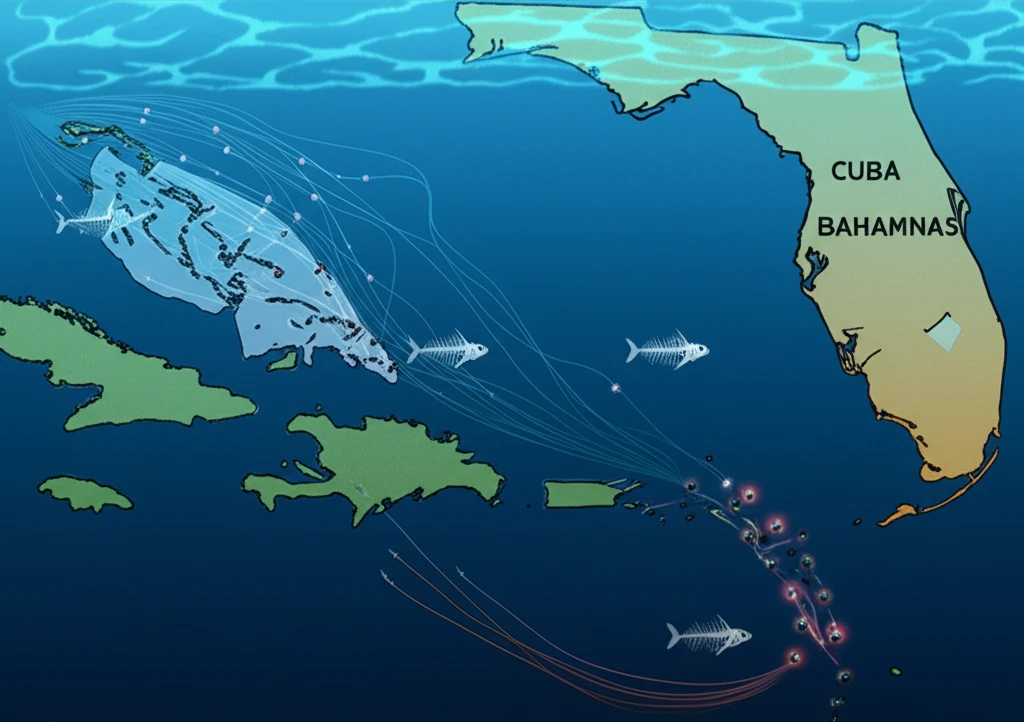
Unlocking the Mysteries of Bonefish: How Larval Dispersal Shapes Coastal Management
"Dive into the groundbreaking research revealing the hidden connections between bonefish populations and what it means for the future of marine conservation."
Most marine species have a dispersive pelagic larval stage, where larvae are transported by ocean currents. The distance these larvae are carried can vary greatly, impacting the genetic makeup and resilience of fish populations. For species like bonefish, which have a long planktonic larval duration (PLD), understanding these dispersal patterns is crucial for effective conservation.
Fisheries management often operates on a local scale, assuming that fish stocks are isolated units. However, this approach overlooks the potential for regional connectivity, particularly for species with prolonged larval stages. Bonefish (Albula vulpes), is economically important and is a prime example of a species where larval dispersal plays a significant role in population dynamics.
Recent research has shed light on bonefish biology, revealing that adults occupy small home ranges and undertake long-distance migrations to spawning locations. This new information underscores the importance of understanding how larvae disperse and connect different populations, which has important implications for fisheries management and conservation strategies.
Mapping the Routes: A Larval Dispersal Study

To address the knowledge gap surrounding bonefish larval dispersal, researchers conducted a comprehensive study using advanced modeling techniques. The study focused on simulating the surface trajectories of particles, representing virtual larvae, released from 26 known and predicted spawning sites around the Caribbean Sea, Florida, and the Bahamas.
- Release of 100 surface particles at each site twice per month (at full and new moons) from October to April each year.
- Tracking the particles for 53 days, representing the average planktonic larval duration for bonefish.
- Estimating the likelihood that management regions would rely upon larval retention versus larval dispersal from other management zones.
Implications for Conservation and Management
The study's findings emphasize the need to incorporate the likelihood of population connectivity into fisheries management and conservation strategies. It also highlights the importance of ensuring that the ontogenetic habitat requirements of bonefish are properly managed at a regional scale. By understanding how larvae disperse and connect different populations, managers can make more informed decisions about habitat protection, fishing regulations, and other conservation measures.
